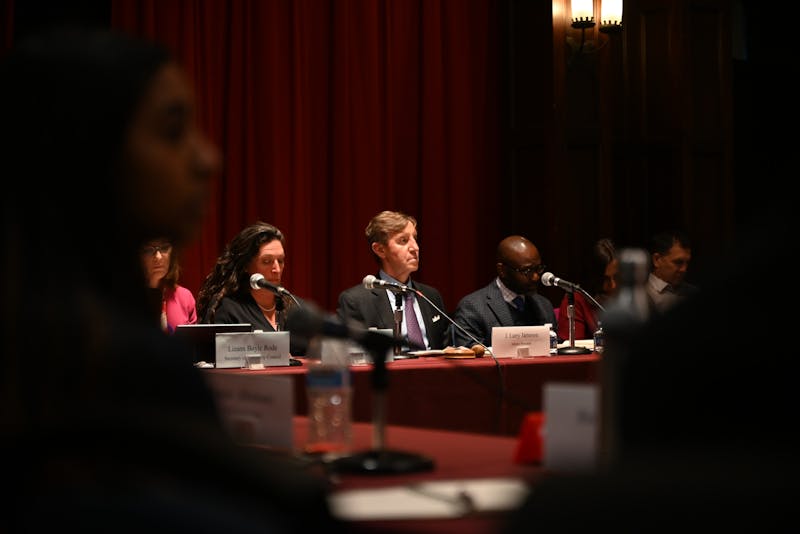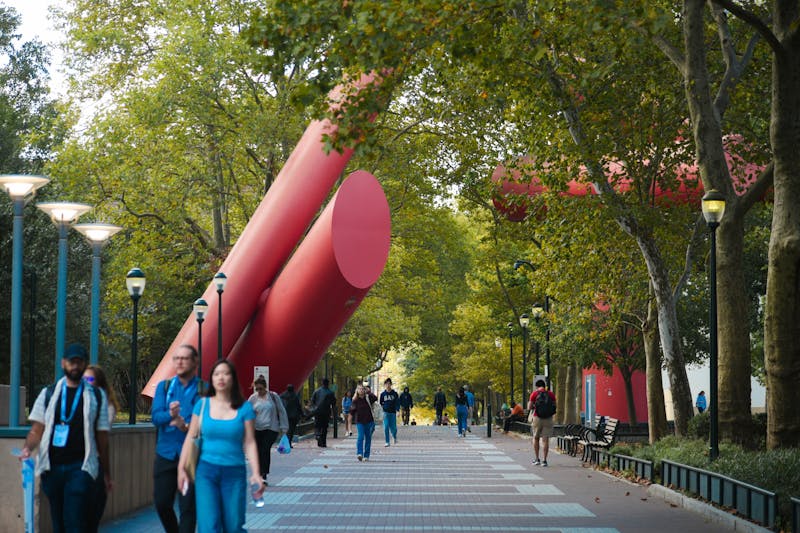Park plan a team effort
To the Editor:
Friday's article about Clark Park ("Clark Park plan faces opposition", The Daily Pennsylvanian, 1/11/02) had some inaccuracies, which I would like to correct.
The article refers to the scheme as the University City District's revitalization plan and states that Friends of Clark Park are protesting it. In fact, the plan belongs to the community and has been spearheaded by Friends of Clark Park. It was adopted by our board in last July was developed under the leadership of a 22-member community steering committee.
Community input was gathered through a series of public meetings, surveys and interviews. The plan was altered several times to accommodate the public's concerns. To date, the plan has the endorsement of many community groups and public officials.
The Jan. 10 meeting was not an open meeting, and I specifically did not invite the media because I wanted those who attended to remain anonymous. It was intended to be a good faith effort to reach out to individuals who had signed a petition against the proposal last June.
This petition, which was addressed early last August, was sent again to public officials in late August, giving the appearance that there were still unheard concerns. Of 124 individuals invited to the meeting, only seven attended. Those seven had a diversity of opinion regarding the plan. Of the other individuals who were in attendance, some opposed the plan, some supported it and some were simply curious.
The revitalization of Clark Park is an exciting opportunity for the community. There will be many more challenges to face. As the project moves forward, the process will continue to be community based with an emphasis on openness.
Susan Scanlin
The writer is president of Friends of Clark Park. Sprinklers worth the cost To the Editor:
The article on Pennsylvania's new fire sprinkler financial assistance program, ("Gov. signs new fire safety law", DP, 1/9/02) states that "largely because of the exceedingly high cost of sprinkler systems, which would be especially burdensome for small colleges," the state chose not to mandate the systems. As David La Torre said, "let's be frank -- these things cost money, and they cost a lot of money."
Actually, the fire sprinkler business is very competitive. The manufacturers of sprinkler components continually improve their products to be more "cost effective." Sprinkler technology has advanced rapidly to meet new market demands while remaining "cost effective."
The article fails to mention the "cost effectiveness" of fire sprinkler systems from a risk management perspective. The "cost" of a sprinkler system can be amortized over several years through insurance premium savings. Building construction evaluations reveal that sprinkler costs are among the most affordable of all building systems when applied to square foot cost appraisals.
Fire control is enhanced tremendously, primarily by the application of specific density water spray discharge during the critical first stages of a fire. Loss potential is reduced as each sprinkler head, strategically located through calculated design, stands ready to control a fire until firemen can take over with manual extinguishing operations. Water usage and subsequent water damage claims are reduced by sprinkler systems through "controlled" water application.
The value of the sprinkler system begins before the building even receives a use & occupancy certificate and continues throughout the life of the building.
Life safety is enhanced so dramatically that less stringent building, and life safety code requirements can be applied when a fire sprinkler system is installed -- thereby promoting additional savings through construction cost containment.
William Gearhart
Institute for Environmental Medicine
The Daily Pennsylvanian is an independent, student-run newspaper. Please consider making a donation to support the coverage that shapes the University. Your generosity ensures a future of strong journalism at Penn.
DonatePlease note All comments are eligible for publication in The Daily Pennsylvanian.







